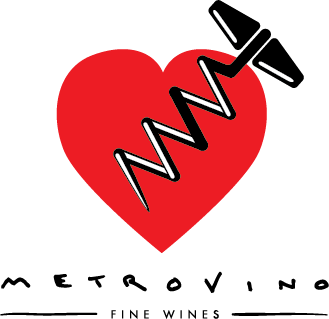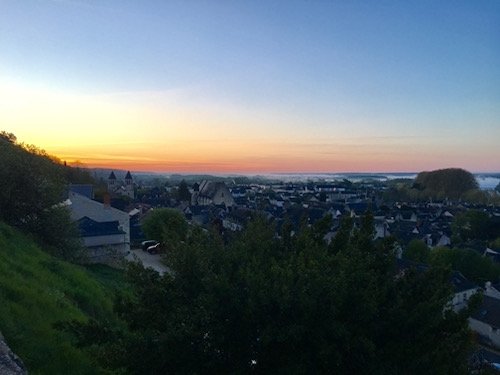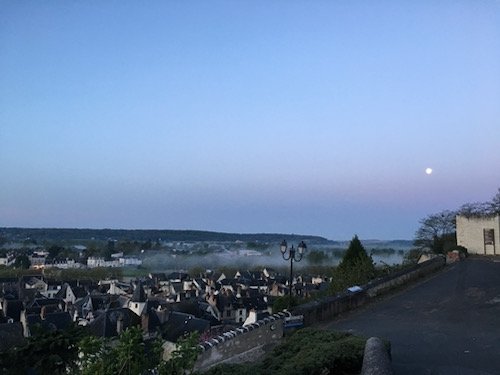by Al Drinkle
Nobody can be good at everything, and any wine shop that tries to excel in all categories will at best achieve consistent mediocrity. It's known to our frequent customers that, of all French regions, Metrovino ignores Bordeaux. The reasons for this are unimportant, and to tackle them exhaustively would comprise a separate and far lengthier article than the one that you've presently committed to. However, a partial justification of our stance can be made while circuitously endorsing the "sale wine” that precedes this pedantic piece of writing.
A few years ago, an avid collector of Bordeaux enlisted me to help him with a project. Recognizing that he owned far more wine than one could ever hope to drink, he decided to sell a significant portion of his collection through a US-based auction house. In order for the wine to be legally transferred to the US, each bottle first had to be stickered with the regulatory nomenclature that all liquor products in that country must carry.
I spent a few afternoons prying open wooden cases of (mostly) First Growth Bordeaux spanning the mid-1980s all the way through the past couple of vintages. I'd then apply the stickers and reseal the boxes. While performing this rather monotonous task, I noticed that a typical label from the '80s routinely showed 12% or 12.5% alcohol by volume (occasionally 11.5%), whereas more recent labels typically “boast” 14.5% or higher (which, given the legal leeway for “error”, could arguably be assumed to be at least 15%). Several other regions’ wines have increased in ripeness, alcohol and all the corresponding chemical and structural components required for such a wine to be “balanced", but few have changed so unrecognizably as Bordeaux.* Partisans would argue that the wines have become much better in the process, but it's completely fatuous to think that modern examples could resemble their 1980s counterparts in any way except as a romantic fantasy.
This brought to mind a passage from Hugh Johnson’s first wine book—such a pioneering publication, I might add, that the concise title “Wine” was available. In discussing the two most famous red wines of the world, namely Burgundy and Bordeaux, he states, "Burgundy is popularly supposed to be fruity, dark, full-bodied and sweet; claret** is supposed to be light, dry and delicate". Excuse me?!?!? In 2022 this statement seems preposterous, possibly even a mistake, but the terms “light”, “dry” and even “refreshing” are used throughout the lengthy chapter dedicated to red Bordeaux. Even if Burgundy had remained stylistically stable since the '60s (it hasn't), this would imply a meteoric and profound transformation in the case of Bordeaux. With no undue disrespect to modern Bordeaux, it seems that the classic expression, that which made the region's name hallowed, has been lost. Were today's wine lovers simply born a few decades too late to experience this splendour? I wonder…
A few hours north of Bordeaux is the illustrious Loire Valley, where Bordeaux's Cabernet Franc grape is used to make the best red wines. The last few times that I've taken home a bottle of Loire Valley Cabernet Franc, I've had a minor epiphany. Aromas of wild raspberries abound, but as if they were accidentally plucked in tandem with a shred of their refreshingly minty leaves. Alongside this, I find something starkly “mineral", an abused word, I know, but in this case akin to the first splash of water onto hot sauna rocks. Sometimes there's heirloom tomatoes, other times deeper, plummier cues. I love the rush of green flavours underscoring the perfunctory fruit. This nuance has everything to do with freshness and nothing to do with underripeness, and I love the physically and mentally invigorating influence of a wine that's briskly complex, communicating even solemn messages with energy and levity. Most pertinently, in these modest Cabernet Franc-based wines I perceive the spectre of something forgotten—namely, the inimitable charm and compelling singularity of the best examples of 1970s and 1980s Bordeaux that I've been lucky enough to try.
In her 1994 Oxford Companion to Wine, Jancis Robinson wrote that Chinon, one of the three or four great Loire Valley appellations for Cabernet Franc, is “essentially a Frenchman's wine". This might be a euphemistic way of saying that the once precariously lean style might have made sense to those who had been weaned on it, but it wouldn't find a broad fanbase amongst savvy, international wine drinkers. But as mentioned, it's not just Bordeaux that's changed over the recent decades. Previously pushing the northern limits as to where palatable red wine might be cultivated, Loire Valley Cabernet Franc used to be a weedy and rustic affair in more vintages than not. Now it can now be relied upon to layer alluringly pure fruity and leafy charm atop a zesty, digestible structure at modest alcohol levels in virtually every growing season. This of course assumes a skillful winegrower and a propitious vineyard site, but luckily there are innumerable examples of both.
I suspect that the number of us who lament the loss of classic, light, refreshing Bordeaux is insignificant, and even more so for anybody who's under the age of 60. Yet while most people are excited that climate change, critical encouragement, consumer enthusiasm and winemaking response have morphed Bordeaux's red wines into unrecognizable behemoths, I am comforted and fascinated that the old style that made the region's reputation isn't extinct. It just moved north to the Loire Valley.
* In the few weeks that have passed since I wrote this article, a few prestigious Burgundy arrivals would indicate that this celebrated region is following Bordeaux’s trajectory.
** The British have traditionally referred to red Bordeaux wine as "claret”.



